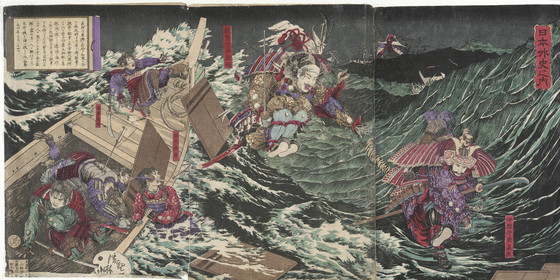Minamoto Yoshitsune, Governor of Iyo, Leaping across Eight Boats

Please log in to add this item to your gallery.
View comments
No comments have been posted yet.
Add a comment
Please log in to add comments.
Please log in to add tags.
* Nearly 20,000 images of artworks the museum believes to be in the public domain are available to download on this site.
Other images may be protected by copyright and other intellectual property rights.
By using any of these images you agree to LACMA's Terms of Use.
Minamoto Yoshitsune, Governor of Iyo, Leaping across Eight Boats
Alternate Title: Iyo no kami Minamoto Yoshitsune
Series: An Unofficial History of Japan
Japan, May 5, 1879Prints; woodblocks
Triptych; color woodblock prints
Overall: 13 13/16 x 27 7/8 in. (35.1 x 70.8 cm)
Gift of Barbara Bowman (AC1996.84.1)
Not currently on public view


